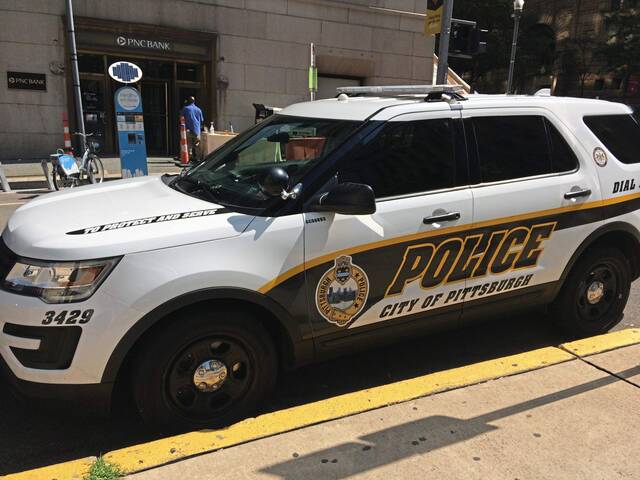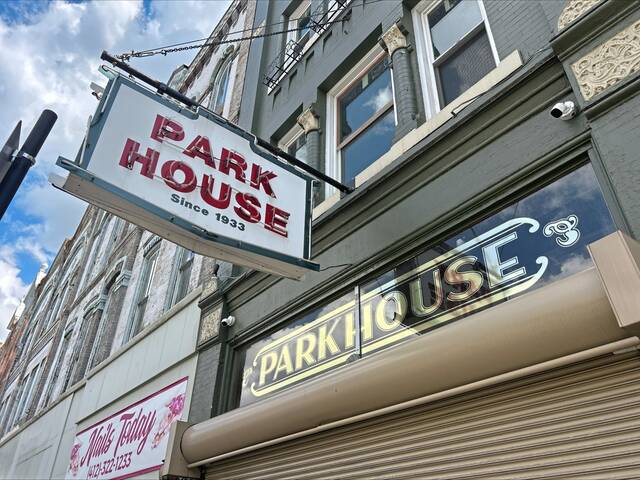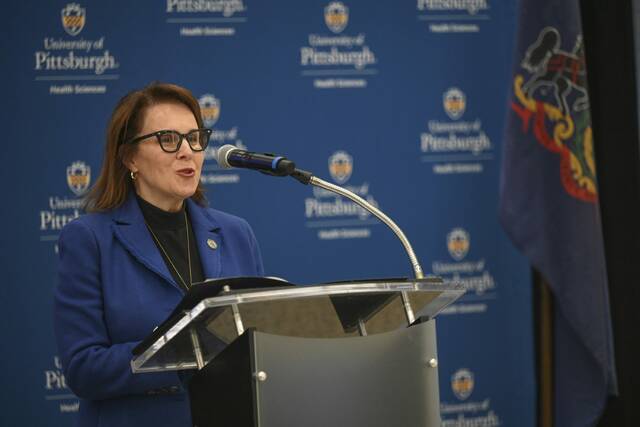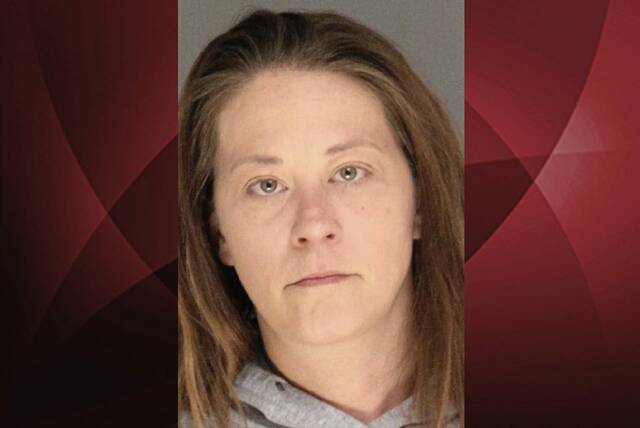About 1 million gallons of stormwater runoffs are gathered and redirected to be absorbed by trees and plants at Centre and Herron avenues in Pittsburgh’s Upper Hill District, thanks to a 585-foot bioswale built in 2017.
The project won a national engineering award as an example of environmental sustainability. On Wednesday, Mayor Bill Peduto and PWSA Executive Director Will Pickering used the site as the place where they issued they next challenge they hope to tackle to manage increasing stormwater runoff in the city.
They’re seeking proposals to come up with a comprehensive stormwater management plan for the entire city. They hope it will become a model to be used around the world.
Pickering called it a “once-in-a-generation opportunity.”
“The mayor in his vision has really challenged us to think more comprehensively,” Pickering said. “We’re looking internationally for the best ideas.”
The Pittsburgh Water and Sewer Authority posted on Thursday details about the requests for proposal it is seeking.
It anticipates the cost of implementing a finished plan at between $100 million and $200 million, Pickering and Peduto said.
To pay for it, the city will look to its foundations and seek other public and private funding. PWSA can’t afford to fund it with a rate increase on customers, Peduto said.
Firms will have about 6 months to come up with a plan that addresses the particular challenges in Pittsburgh, where the hilly topography, aging infrastructure, and ever-increasing amounts of rainfall pose a particular challenge, they said.
“This really is an exciting opportunity for Pittsburgh to lead by example,” Pickering said.
The announcement comes the same week the Rand Corp. released a study of stormwater management in the region.
The study detailed the challenges the region faces to meet water-quality mandates as it works to upgrade its water and sewer systems. Climate change, population growth and changes in land use are going to worsen the problem, according to the study.
Neither Peduto nor Pickering mentioned the study, but it provides an independent view of the need for the stormwater plan.
“What we’re doing today is challenging the world,” Peduto said.
Given the topography of Pittsburgh and the realities of climate change, what does an adequate stormwater system look like? The proposals being sought will answer that question, Peduto said.
The idea is to create a “sponge instead of a funnel” so that areas don’t flood and the sewer system doesn’t overflow into the groundwater, Peduto said.
The plan will build on other initiatives to eliminate lead in the water system and replace old pipes, Peduto said.
“The is our opportunity to build a better Pittsburgh for those that will come after us,” he said.








